A Culture Strategy for Scotland
A Culture Strategy for Scotland shows how important culture is to Scotland’s prosperity and sets the future direction for supporting culture in Scotland.
6. Ambition 3: Empowering through culture
Title: YDance (Scottish Youth Dance) Project Y Performance Course 2017. Young dancers aged 16-21 performing on the opening night of the Project Y Tour 2017 at Tramway, Glasgow.
Credit: Photographer - Paul Watt Photography
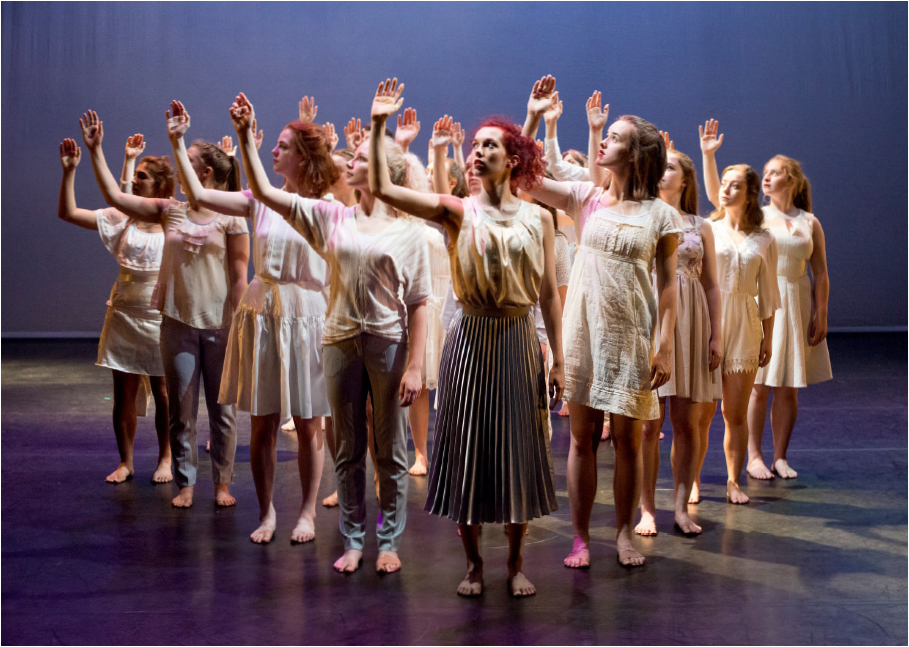
Celebrating culture as part of every community; essential to our lives and wellbeing.
Our aims are to:
- Continue to celebrate Scotland's extraordinary cultural contributions
- Extend the view of culture to include the everyday and emerging, the established and more formal
- Extend opportunities that enable people to take part in culture throughout their lives
- Recognise each community's own local cultures in generating a distinct sense of place, identity and confidence
To do this we will:
- Work with Creative Scotland to map local authority support for culture and to explore future models of collaboration between national and local bodies
- Launch a Creative Communities programme in partnership with Inspiring Scotland and with support from Creative Scotland - a new initiative to support and empower individuals and communities to further develop their own cultural activity
- Work in partnership with culture trusts and local authorities, including in Community Planning Partnerships local networks and CoSLA to realise local outcomes across Scotland
- Work with Culture Conveners from Scottish local government and culture trusts including through establishing a joint meeting of arts and culture conveners
- Work with national organisations to help them plan their community activities to ensure the widest possible reach across Scotland
A broad view of culture
People engage in culture in a huge range of different ways: formal and informal; historic; traditional; and emerging and it is often through culture that social networks and relationships are formed. For many people in Scotland, culture is a self-determined part of everyday life and it is often through local, community-led culture and heritage where the greatest transformations can occur.
Access, participation and equity
Culture can improve the life chances of all people, at every stage in life, in Scotland and it is an important element of action to reduce poverty and mitigate its impacts. However, not everyone is able to benefit from it equally and more needs be done to support equal opportunities to access, participate and develop a career in the cultural and creative sectors.
Living or growing up in poverty can mean less opportunity to engage in certain types of cultural activity. This can apply to cultural activities which are free to access but include hidden costs like requiring clothing, equipment, materials, transport or food.
Scotland's longstanding work on cultural engagement and participation shows that those who engage in cultural activity as children are more likely to participate and attend when they are adults, regardless of parental background, wealth or poverty. It is, therefore, crucial that more is done to make sure all communities are supported to share and exchange cultural experiences with others and that everybody has opportunities to do so. In some cases, specific provision may be needed to support aspirations to increase access and participation and ensure everyone has full access to the cultural life of Scotland and an equal opportunity to enjoy and contribute to culture, the creative industries and the arts.
If we are to harness Scotland's creative talents and support a diverse talent pipeline to support the future of the sector, it is important we increase access. Creative Scotland is undertaking work to understand the impact of public funding on reducing these inequalities.
Creative Scotland's analysis of cultural activity
We will work with Creative Scotland to map local authority support for culture and to explore future models of collaboration between national and local bodies
Cultural engagement and participation is currently measured relative to more formal and established forms of culture, many of which are free and accessible. However not everyone participates in these forms of cultural engagement. People engage in cultural activity in many different ways and how that is measured and reported must be reconsidered to better reflect the nature and breadth of cultural engagement.
In the 2018 Scottish Household Survey review, we made a number of changes to the questions asked including rewording and reordering some activities and events and adding new response categories to better understand the nature and frequency of attendance at cultural events and participation in cultural activities. For example, 'streaming of a live performance' and 'viewing cultural content online' were included to collect information on newer forms of digital cultural engagement. Some of the changes made may have affected participation comparisons over time.
We support equal opportunities for people across Scotland to lead a cultural life of their choice with all aspects of cultural engagement - formal and informal - available to them regardless of age, socioeconomic background, gender, ethnicity, race, language, disability or sexuality. We know that poverty, ageing, health, inequality, communication and disability can all impact individuals and communities' ability to access and participate in culture and tackling this must be a priority for the culture sector in Scotland.
Case Study: Fèis model - engaging young people in traditional arts
Fèis Rois is just one organisation which uses the successful fèis model. Founded in Ross-Shire in 1986, the work of Fèis Rois has grown significantly and is now recognised globally. The organisation enables people of all ages to access, participate in and enjoy folk music, the traditional arts and Gaelic language through a diverse programme of annual activities in Ross and Cromarty, across Scotland and beyond.
Fèis Rois are a key partner in a number of national and multinational projects, highlighting Scotland's commitment to cultural excellence on an international stage. The organisation provides a clear ladder of progression for young people aspiring to work in the music industry in Scotland with many of the teaching artists working for Fèis Rois today having been participants of the organisation's diverse offer of programmes when they were children and young people. Fèis Rois is committed to ensuring access to opportunity as well as nurturing excellence and, as such, the organisation is deeply engaged in work with Care Experienced Young People and those with additional support needs whilst, at the same time, offering professional development, commissioning, and high profile performance opportunities.
Title: Fèis Rois at Festival Interceltique de Lorient
Credit: Photo reproduced courtesy of Fèis Rois
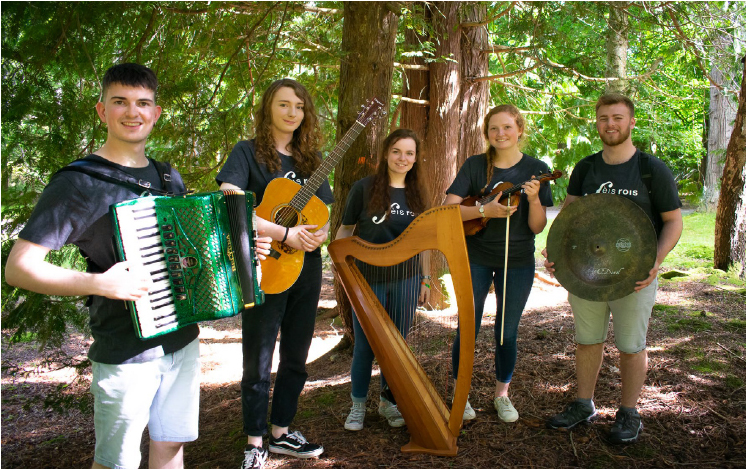
Culture, communities and place
Culture in Scotland is diverse and people are proud of their culture and heritage. Places are culturally distinctive and what people value about culture in their area is very personal.
The Scottish Government recognises the importance of place, where people, location and resources combine to create a sense of identity and purpose, and that place is at the heart of addressing the needs and realising the full potential of communities across Scotland.
Places where we live and grow up shape our opportunities and the daily experiences that make us feel part of a community. Place-based approaches enable local communities to influence, shape, and where there is an appetite, deliver long term solutions because it is easier for people and communities to identify with, relate to and feel connected with their place.
The importance of addressing the needs of communities holistically is increasingly recognised. Considering issues of the local economy, physical infrastructure and the cultural and social aspects of place together, rather than in isolation, can lead to better multiple outcomes. For example: improvements to housing and the physical environment can reduce crime rates; feeling connected to your community can lead to better educational attainment; and participating in community-led cultural activities can reduce social isolation and improve health and wellbeing.
Giving people a greater say in shaping the cultural life of their communities and community ownership can help protect Scotland's rich cultural heritage and provide inspiration for the cultural expression of the future.
Evidence consistently points to the need for integrated, coordinated actions to deliver improvements for communities rather than a focus which isolates social, economic or physical aspects. For example, arts and culture can contribute to many of the often deep-rooted and complex themes that Community Planning Partnerships (CPPs) typically prioritise in their Local Outcomes Improvement Plans, such as around inclusive growth and improving employment prospects, positive physical and mental health, children's wellbeing and sustaining fragile communities.
Realising culture's role in achieving local outcomes
We will support Creative Scotland and the other national cultural organisations to realise the potential that culture has to achieve local outcomes. Building on work with local authorities, culture trusts and other partners, including in CPPs and local networks and working with Culture Conveners from Scottish local authorities, we will look for opportunities to share local knowledge, align resources and work in partnership so that the part that culture can and does play in delivering the priorities that are most important for local communities is visible and valued. We will also establish a joint meeting with Arts and Culture Conveners from Scottish local government.
Places and people underpin culture and communities in and across Scotland and generate a distinct sense of place, identity and confidence. Adoption of the Place Principle[33] can help realise our vision of an inclusive and extended view of culture which recognises and celebrates the value and importance of the emerging, the everyday and grassroots culture and creativity.
A collaborative, place-based approach can help create the right conditions for culture to thrive and partnerships between local government, cultural and creative organisations, businesses and organisations in Scotland's most deprived communities can and do realise a wide range of outcomes for people including improved health and wellbeing, social cohesion and reducing inequality.
Culture lies at the heart of successful place-making, drawing on our natural and cultural heritage, to create shared visions for the future. Cultural activities are an important economic driver in their own right, as well as increasing the interest and appeal of our built environments. By taking cultural impacts into account at an early stage, the planning system can sustain and enhance our cultural offerings.
Title: Glasgow Mural Trail - The World's Most Economical Taxi by Rogue-One in Mitchell Street. Part of the Glasgow City Centre Mural Trail
Credit: Photographer - Kenny Lam. Reproduced courtesy of VisitScotland.
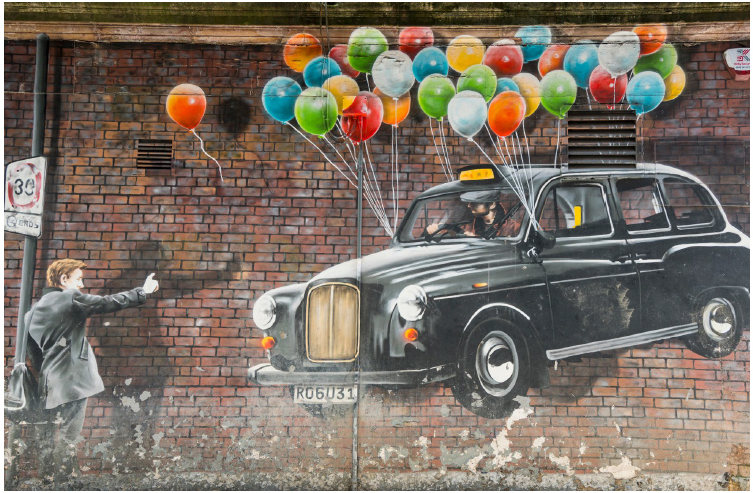
Culture is one of the considerations within the new Investing in Communities Fund, launched in May 2019. The fund aims to promote a more responsive, community-led approach in our most disadvantaged communities. Fundamental to the fund is a focus on place to address the needs and realise the full potential of communities. The fund is flexible and can adapt to existing and emerging community issues and priorities, encouraging more effective and strategic place-based partnership working and ensuring that communities are directly involved in developing solutions that best meet local circumstances.
Creative Communities
We are also launching Creative Communities, a new initiative to support and empower individuals and communities to further develop their own cultural activity. The programme will seek to support activity where communities are empowered to take the lead to provide sustainable opportunities for more people from areas with limited opportunities and lower levels of cultural engagement. Match-funded by the justice portfolio through the proceeds of crime, the programme will provide support for cultural projects that produce positive outcomes for young people at risk of reoffending.
Opportunities will be of high artistic quality, covering both the artistic output and the process of community engagement, and will allow for new and different creative activities to take place, supporting new models of collaboration across the subsidised, amateur, voluntary and commercial sectors.
Learning from Year 1 of the programme will provide insight and practical direction into different ways of establishing sustainable arts and cultural opportunities across Scotland, demonstrating the power of arts and culture to enrich the lives of individuals and make positive changes in communities which is clearly connected to the culture of the community, including reflection upon its past, present and future.
Creative Communities
Creative Communities is a new initiative to support and empower individuals and communities to further develop their own cultural activity. The programme will be delivered by Inspiring Scotland working with Creative Scotland and will build on the experience of Creative Scotland's existing place-based programme. It is about exploring new models of community-led and participatory arts activity which will make a positive contribution to the lives of people and communities across Scotland.
Gaelic and Scots
The Scottish Government's aim is to see an increase of people speaking, using and learning the Gaelic language and the promotion of the Gaelic culture is a key element of this. The special status of Gaelic is recognised in law through the Gaelic Language (Scotland) Act 2005[34]. This Act required Bòrd na Gàidhlig to prepare the National Gaelic Language Plan 2018-2023[35] which contains specific commitments to support and promote the Gaelic language. The role of MG Alba is also set out in legislation and it has a critical role in supporting and promoting Gaelic language and culture and the culture of Scotland more generally. Both of these bodies work closely with other authorities and organisations in promoting Gaelic in Scotland. Gaelic culture is a celebration in and of itself and provides opportunities for skills development and expression, for access and participation. This strengthens the profile and appeal of the language and encourages confident language use.
Though there is currently no legislation supporting Scots, the Scottish Government has taken steps to support the language in all its forms. We recognise the important role that newly formed bodies such as the North East Doric Board have in supporting the language and culture. They are close to their sector and there are opportunities for us to use this knowledge to better target resource.
Supporting local access and participation
Performance venues throughout Scotland make an important contribution to the cultural, social and economic life of Scotland, including our night time economy. They range from our grassroots music venues which provide a space where new bands and acts can perform, develop and grow their talent, to the large venues where established artists, including internationally known musicians, actors and dancers perform.
We recognise the importance of having thriving venues within the performing arts sector in Scotland. We are currently exploring new ways that we can support Scotland's performance venues so that they can grow and develop and, in particular, that grassroots music venues have the right skills and experience to support them and the right performance infrastructure that will enable them to contribute to the extensive tourist offer in Scotland.
National collections and cultural organisations
National collections housed in national museums and galleries, performances by the national companies and the historic assets managed by Historic Environment Scotland are world class. Access to the national collections (National Museums Scotland, National Library of Scotland and National Galleries of Scotland) is free to all regardless of ability to pay. However, geographic location can often mean our cultural assets are out of reach to some communities because of transport or other costs.
The five National Performing Companies work to improve access to artistic and creative work amongst communities across Scotland. They cover a vast geographical spread, working Scotland-wide to engage with communities and tour far and wide. They provide a full range of formal education programmes - at nursery, primary, secondary, further and higher education levels - and outreach programmes which give people across Scotland of all ages and socio-economic groups the opportunity to experience and participate in the companies' work. Some of the most innovative recent initiatives have reached people managing mental and physical health conditions.
Initiatives are already in place to connect national resources with local communities - such as subsidised school visits to historic properties, loans and partnerships between the national collections and local museums and galleries, performing company tours to venues and community engagement across Scotland. This strategy emphasises the continuing importance of all this activity.
Title: Oscar Castellino and Jessica Leary in a Pop-Up Opera performance of Be A Sport, Spike! Scottish Opera 2018.
Credit: Photographer - Sally Jubb Photography
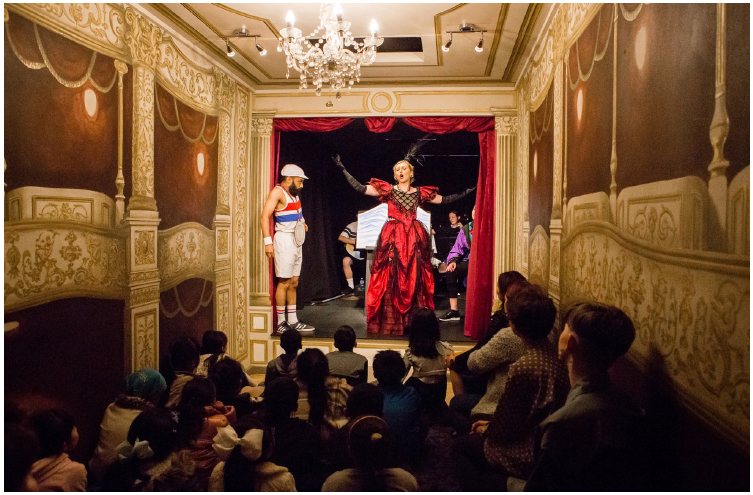
National cultural organisations
The Scottish Government will work in partnership with the national cultural organisations - the National Performing Companies and National Collections - to map out their collective engagement across the country. This will contribute to the development of a joined-up approach to strategic cultural planning and ensure equity of access, participation and opportunity for all communities across Scotland. We will also work with the national cultural organisations to review and strengthen their approaches to community engagement, to consider the Place Principle and seek new ways of adding value locally which align with the vision, ambitions and aims of A Culture Strategy for Scotland.
Title: Scottish National Gallery of Modern Art One
Credit: Photographer - Kenny Lam. Reproduced courtesy of VisitScotland
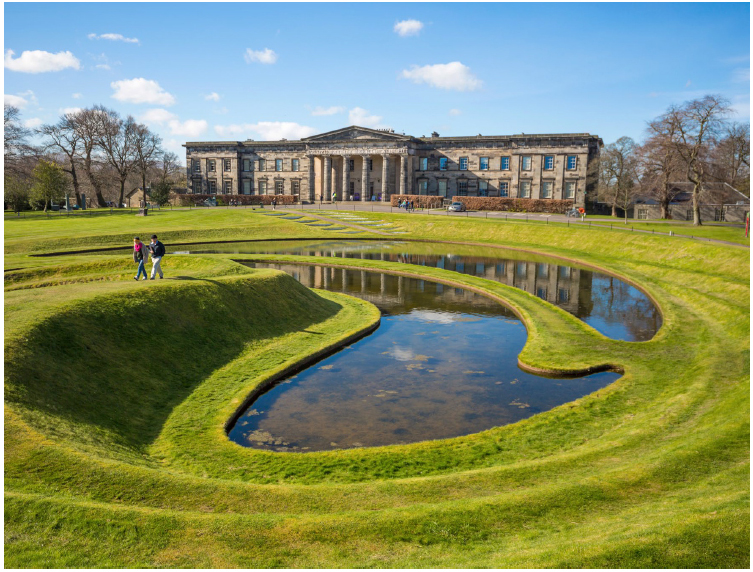
Contact
There is a problem
Thanks for your feedback